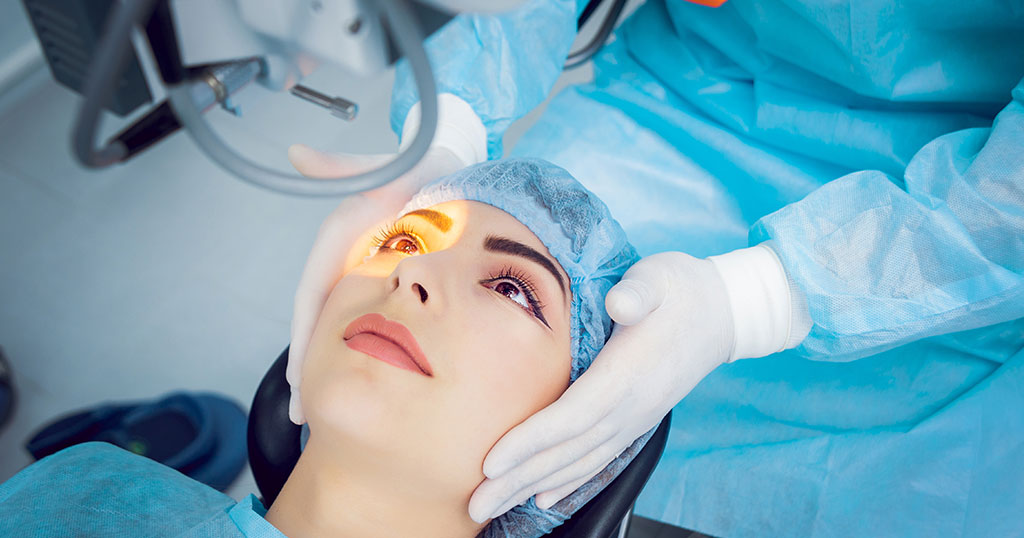
MIGS: The new and exciting prospect in Glaucoma treatment!
This blog on Minimally Invasive Glaucoma Surgery (MIGS) was authored by Dr. Salman Waqar, Consultant Ophthalmologist in Cataract and Glaucoma Surgery.
What is MIGS?
Minimally Invasive Glaucoma Surgery, or MIGS, has shown formidable results in mild or moderate glaucoma. MIGS is designed to improve the safety of surgical intervention for glaucoma cure.
While coined minimally invasive, micro is a more appropriate term, truly differentiates these microscopic ophthalmic procedures from other minimally invasive surgical procedures (i.e., general surgery). MIGS can be considered as an alternative to medical therapy in an effort to address adherence challenges, adverse events, and quality-of-life (QOL) issues with topical medications.
The iStent
The iStent is the smallest implantable device approved by the FDA to be used on the human body. The iStent can reduce the need for daily use of glaucoma eye drops. A small (1mm) titanium drainage stent is inserted into the eye’s natural drainage channel to lower intraocular pressure.
The iStent is not visible in the eye, and shows no physical evidence of its presence. Nor does it appear in the vision of the person with the stent.
XEN Glaucoma Implant
The implant is a soft, collagen derived, gelatin that is known to be non-inflammatory. The Xen Gel Stent aims to reduce intraocular pressure by inserting a small drainage tube into the eye. The stent allows fluid to drain from the anterior chamber into a reservoir (bleb) under the conjunctiva. The goal of implantation is to create an aqueous humor outflow path from the anterior chamber to the subconjunctival space.
Similar to the iStent, the implant also has no physical appearance. However, occasionally a shallow bleb can be seen in extremes of gaze, where the eye is looking very far down and outwards.
The Surgery
Successful MIGS surgery takes much less time than many other types of Glaucoma surgery, typically lasting 30 minutes at the most. At Moorfields Eye Hospital Dubai/Abu Dhabi, MIGS implantation is usually performed under local anaesthesia, although general anaesthesia is also possible under certain circumstances.
Typically a drug called Mitomycin C (anti-scarring medication) is also used at the time of surgery if indicated to suppress healing.
It is extremely rare for complications to occur at the time of the surgery. When the complications do occur, they occur usually within 2 weeks of the surgery.
Postoperative Period
The blurring is usually worst for the first 1 to 2 weeks after surgery, and improving slowly afterwards. It takes about 1 month for the eye to feel completely normal though vision would stabilise much earlier.
Eye drops and tablets to lower the eye pressure are not normally required for the operated eye during the first night after surgery. The following day, the postoperative eye drops are usually started after removal of the eye patch and cleaning of the eye. The postoperative eye drops will usually consist of an antibiotic and anti-inflammatory steroid eye drops to use for the first month after surgery.
The patient will require two follow up visits two weeks apart, after the operation in order for a follow up.
Following surgery you are able to read and watch television as normal as these activities will not harm your eye. It is however important to avoid strenuous activity during the first few weeks after surgery.
Here is a table with the dos and don’ts:
| Activity | Advice |
| Hair Washing | No need to avoid but back wash advised to avoid getting shampoo into your eye. It may be easier to have someone else wash your hair for you. |
| Showering/Bathing/Wadhu | No need to avoid but don’t allow soapy/dirty water to go into your eye |
| Sleeping | Try to sleep on your un-operated side. Tape the plastic eye shield provided over your eye every night for two weeks to avoid accidentally rubbing your eye whilst asleep. |
| Walking | No restrictions |
| Wearing glasses/sunglasses | Do not change the prescription of your glasses until the doctor advises. You may wear sunglasses for comfort and UV protection. |
| Driving | Your doctor shall advise you. If advised against driving and you continue to do so, this shall be at your own risk. |
| Flying | No restrictions |
| Going away on holiday | Discuss with your doctor/nurse as it is very important to attend your follow up appointments. |
| Wearing eye makeup | Avoid for one month then use new makeup. Never share eye make-up with anyone else. |
| Household chores e.g. cleaning, ironing, hovering | Avoid for 1 – 2 weeks |
| Sexual Activity | Avoid for 1 – 2 weeks |
| Gym workout | Avoid for 1 months |
| Playing any sport | Avoid for 1 months |
| Running/jogging | Avoid for 1 months |
| Swimming | Avoid for 1 months, after which you must use goggles |
| Prayers (Salah) | You may continue prayers but do the rockoo/sajdah in a chair, your head must not go below your heart level. |
With showing 80-90% success rates in most studies, MIGS is slowly becoming a well requested form of glaucoma correction, especially since it only takes around 1 month for the eye to feel completely normal in most cases.
